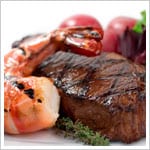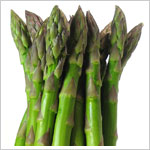
Written By: Sofia Layarda, MPH
Title: Master of Public Health
Alumni: University of California, Berkeley
Last Updated on:

There are many causes of anemia, but the condition itself basically means lacking healthy red blood cells to carry oxygen throughout the body. We’re going to discuss a few anemia conditions that are diet related.

Table of Contents
 For many people, hearing the term “anemia” implies that the nutrient lacking is iron. This is not too far off the mark, because iron deficiency anemia is the most common type. It can be the result of not getting enough iron-rich foods, pregnancy, heavy menstrual flows, or growth spurts (in infants or teenagers). Some women with borderline iron serum levels can become anemic during pregnancy, as can those who have had multiple pregnancies and childbirths. Very premature babies may also be anemic. Iron-deficiency anemia may also be caused by celiac disease. According to gluten-free diet expert Shelly Case, damage to the intestinal villi in the area where iron and folate are absorbed frequently results in a deficiency of these nutrients. Very mild anemia may not manifest any symptoms, but once the anemia is moderate to severe, the most common symptoms of iron deficiency anemia are fatigue/weakness, irritability, difficulty concentrating or confusion, coldness or numbness in hands and feet, trouble breathing, headache, and a fast heartbeat.
For many people, hearing the term “anemia” implies that the nutrient lacking is iron. This is not too far off the mark, because iron deficiency anemia is the most common type. It can be the result of not getting enough iron-rich foods, pregnancy, heavy menstrual flows, or growth spurts (in infants or teenagers). Some women with borderline iron serum levels can become anemic during pregnancy, as can those who have had multiple pregnancies and childbirths. Very premature babies may also be anemic. Iron-deficiency anemia may also be caused by celiac disease. According to gluten-free diet expert Shelly Case, damage to the intestinal villi in the area where iron and folate are absorbed frequently results in a deficiency of these nutrients. Very mild anemia may not manifest any symptoms, but once the anemia is moderate to severe, the most common symptoms of iron deficiency anemia are fatigue/weakness, irritability, difficulty concentrating or confusion, coldness or numbness in hands and feet, trouble breathing, headache, and a fast heartbeat.
If you have been diagnosed with iron deficiency anemia, the doctor may prescribe iron supplements in addition to a diet high in iron-rich foods. When it comes to food, iron from animal-based sources (heme iron) is better absorbed than iron from plant-based sources (non-heme iron). However, overall absorption is affected by many factors, including other foods you eat alongside the iron-rich item. Look here for a complete list of top iron-rich foods and enhancing/inhibiting food pairs.
 Although not as common as iron deficiency anemia, Vitamin B6 deficiency can also lead to anemia. Vitamin B6 is needed for many enzymatic reactions within the body, including those in energy and protein metabolism, hemoglobin formation, and immunity. A 2010 article in the European Journal of Clinical Nutrition discussed pregnant women with anemia who did not respond to iron supplementation, whose condition improved when Vitamin B6 supplement was added.
Although not as common as iron deficiency anemia, Vitamin B6 deficiency can also lead to anemia. Vitamin B6 is needed for many enzymatic reactions within the body, including those in energy and protein metabolism, hemoglobin formation, and immunity. A 2010 article in the European Journal of Clinical Nutrition discussed pregnant women with anemia who did not respond to iron supplementation, whose condition improved when Vitamin B6 supplement was added.
People at risk for Vitamin B6 deficiency usually have a pre-existing medical condition that affects nutrition absorption, such as celiac disease, Crohn’s disease, or kidney disease, or are on medications that affect absorption of this vitamin (such as anti-epileptic drugs). Alcohol dependence and obesity are also associated with low Vitamin B6 levels. Deficiency in Vitamin B6 may signal deficiency in the other B-vitamins. Symptoms may not develop for a very long time, and can include confusion, depression, weakened immune function, swollen tongue, scaling on the lips and cracks on the corners of the mouth.
If you are eating a wide variety of whole, minimally processed foods, you should be getting sufficient Vitamin B6 from the diet. Vitamin B6-rich food sources include chickpeas, liver, tuna, salmon, chicken, and turkey. “Starchy” plant foods such as potatoes and bananas are also high in Vitamin B6, as well as whole grains and certain fortified breakfast cereals.
 Anemia can also be the result of a deficiency (in either one or both) of folate or Vitamin B12. Folate and Vitamin B12 have metabolic processes that are intertwined, so Vitamin B12 deficiency can be “masked” by high folate intake. Unfortunately, the neuropathology (and possible severe nerve damage) associated with the lack of B12 will continue if the Vitamin B12 deficiency is not corrected.
Anemia can also be the result of a deficiency (in either one or both) of folate or Vitamin B12. Folate and Vitamin B12 have metabolic processes that are intertwined, so Vitamin B12 deficiency can be “masked” by high folate intake. Unfortunately, the neuropathology (and possible severe nerve damage) associated with the lack of B12 will continue if the Vitamin B12 deficiency is not corrected.
Vegans, in particular, must have an alternate source of Vitamin B12 because it is found only in animal foods such as fish and meats. Pregnant and breastfeeding women who are strict vegans should consider additional Vitamin B12 supplementation to ensure that there is enough Vitamin B12 transfer to the fetus and infant. Deficiency symptoms include fatigue, constipation, loss of appetite and/or weight, tingling or numbness in hands or feet, confusion, poor memory, dementia, and sore mouth/tongue. Medical conditions such as pernicious anemia (an autoimmune disease) and achlorhydia (lack of stomach acids) affect Vitamin B12 absorption and can also lead to deficiency.
High-Vitamin B12 foods include clams, liver, salmon, and tuna. Other good sources are milk (both cow’s milk and fortified non-dairy milks), yogurt, and fortified breakfast cereals. When it comes to fortified non-dairy beverages and breakfast cereals, check the label to find out what % Daily Value of the vitamin is in one serving; it could be 25%, 50%, or 100%.
High-folate food sources include liver, fortified breakfast cereals, lentils and other legumes, spinach and other leafy greens, avocado, and asparagus. Many fruits and vegetables such as oranges, strawberries, and broccoli also contain folate.
Mild anemia usually goes undetected. If you suspect you are anemic, check with your doctor immediately.
Alumni: University of California, Berkeley – Sofia believes in bringing back fun and pleasure into everyday eating. She loves cooking, and is constantly experimenting with ingredients, creating recipes and trying them out on family and friends. Her latest interest lies in finding realistic and practical ways of environmentally-friendly food/eating habits.
anemia, iron, pregnancy, vegetarian